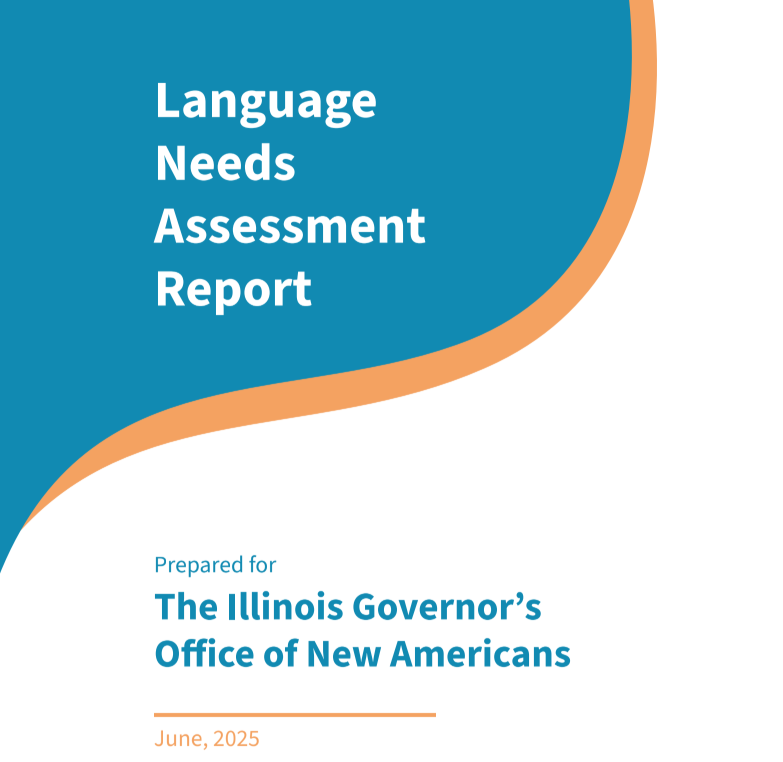Executive Summary:
This Language Needs Assessment Report was prepared by Rob Paral, Senior Research Specialist at the Great Cities Institute (GCI) at the University of Illinois Chicago, and commissioned by the Illinois Governor’s Office of New Americans in compliance with the Language Equity and Access Act (Public Act 103-0723). The report draws on data from the U.S. Census Bureau’s American Community Survey (ACS) to provide a comprehensive portrait of the linguistic landscape of Illinois, with particular focus on residents who are Limited-English Proficient (LEP).
The assessment identifies more than one million Illinois residents who speak English less than “very well,” and highlights the geographic, demographic, and linguistic diversity of this population across the state. The findings underscore the need for state agencies to provide equitable, language-accessible services, reflecting both federal mandates and Illinois’ commitment to inclusion and public service equity. The report also documents emerging trends in language use, noting shifts in migration patterns and the evolving composition of LEP communities.
By offering detailed data on language prevalence and English proficiency across counties, municipalities, and community areas, this report is intended to guide policy implementation, resource allocation, and strategic planning efforts aimed at strengthening access to public services for linguistically diverse populations statewide.
Key findings are as follows:
-
-
One Million Illinois Residents Are LEP:
Approximately 1 million residents (9% of the population) speak English less than “very well” and may require language assistance to access state services. -
Illinois Is Linguistically Diverse:
Over 2.8 million people (24% of the population) speak a language other than English at home. Spanish is the most common, followed by Polish, Chinese, Tagalog, Arabic, and others. -
LEP Individuals Are Spread Statewide:
While most LEP residents live in the Chicago metro area, sizable populations exist across the state, including rural counties and mid-sized cities like Rock Island, Champaign, and Springfield. -
Demographics Show LEP Residents Are Often Older and Female:
The median age of LEP individuals is 49, with women comprising a slight majority in most language groups. -
The LEP Population Is Growing Again:
After a period of decline, the number of LEP residents has risen by 82,000 since 2019, due in part to new migration from countries such as Venezuela and Ukraine.
-
ArcGIS Data Dashboard:
The Illinois Language Needs Assessment Dashboard, developed by the Great Cities Institute, is an interactive mapping tool designed to help users explore the distribution and characteristics of LEP populations across the state. Drawing on U.S. Census Bureau data, the dashboard presents statewide totals as well as detailed demographic information about individuals who speak English less than “very well.” Users can explore LEP data by county, including the total number of LEP residents, the percentage of the county population that is LEP, and demographic characteristics such as age, gender, and place of birth. Additionally, the dashboard highlights the top languages spoken at home in each county, offering insight into the linguistic diversity present throughout Illinois. This tool supports state agencies, policymakers, and community organizations in assessing local language needs and planning more inclusive and accessible public services.
Author:
Rob Paral
Senior Research Specialist
Read and Download the Full Report Here.



